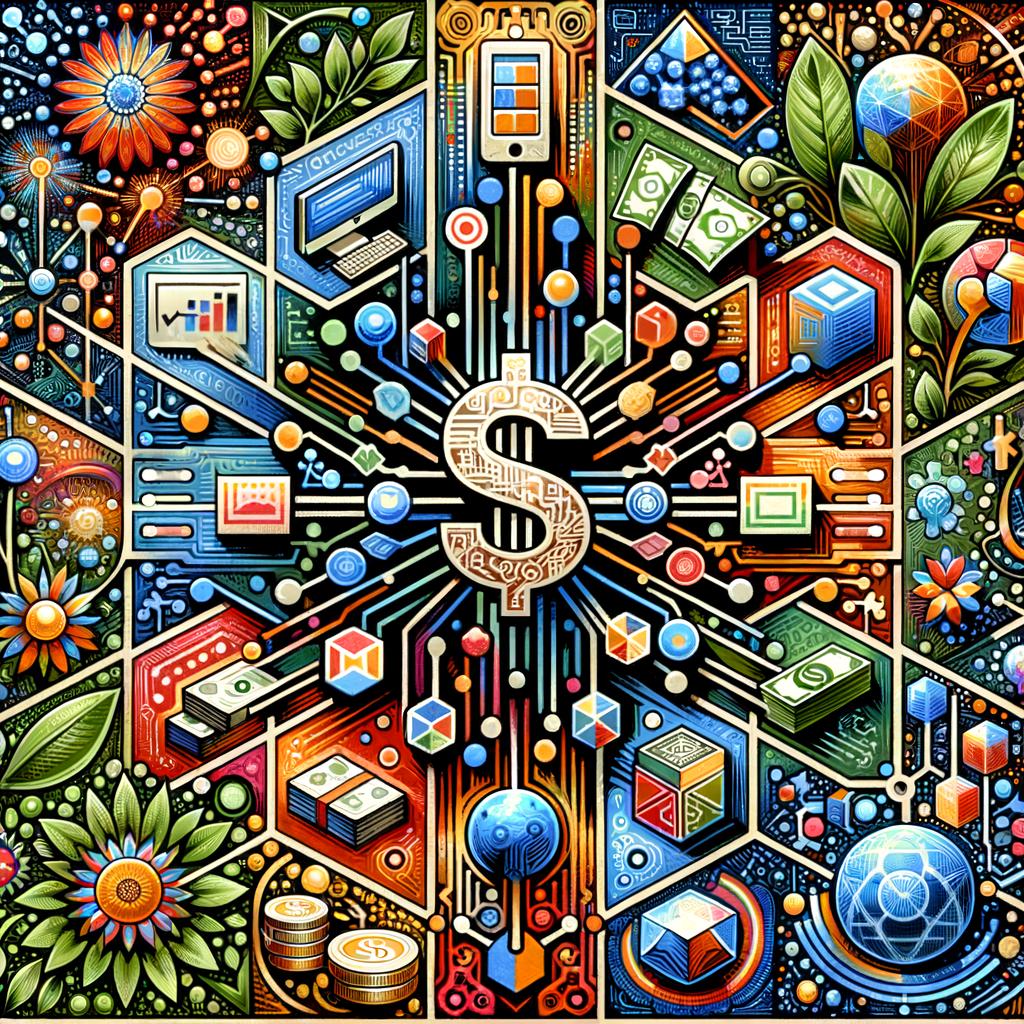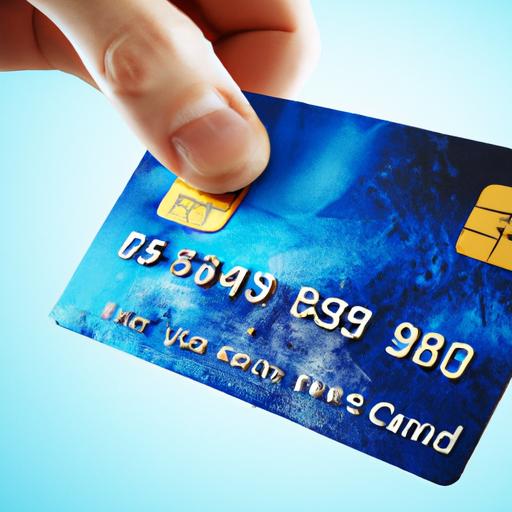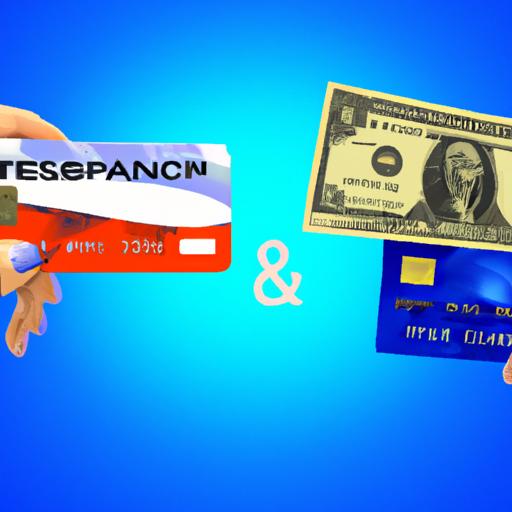Card Payments Industry Customer Experience and Trends
Card Payments Industry Customer Experience and Trends: How card processing affects customer experience, analysis of consumer trends, and adapting to changing consumer behaviours.
The world has changed, my friends. And with it, so have our payment preferences. As the dust from the global pandemic settles, it’s becoming increasingly evident that the way we choose to pay for goods and services has undergone a significant shift.
Gone are the days of carelessly swiping our credit cards, feeling invincible, and forgetting to wash our hands afterwards. The pandemic has taught us the importance of hygiene, and we’ve learned to be cautious even in the smallest aspects of our lives – including how we handle our money.
But what exactly has changed? Well, my curious compadres, let’s dive into the intriguing world of consumer payment preferences post-pandemic.
First and foremost, contactless payments are now all the rage. It’s like the forbidden fruit we were shy to taste before, but now we can’t get enough of it. Who knew the simple act of tapping a card or waving our phones in front of a machine would bring us so much joy?
But it’s not just about convenience and avoiding germ-ridden surfaces; it’s about speed. In a world where time feels even more precious than before, contactless payments have become the way to go. No more waiting in long queues for ages, fumbling with our wallets or purses. Now, a quick tap-tap and we’re good to go – like magic!
Furthermore, the pandemic has unleashed a wave of innovation in the payments industry. With people seeking alternative ways to handle their finances, digital wallets and online payment systems have taken center stage. Who needs physical cash when you can pay for your groceries, your morning coffee, or even your latest impulse buy with just a few taps on your smartphone?
And let’s not forget about the rise of QR codes. Yes, those funky-looking squares that used to be a mere curiosity have now become an essential part of our everyday lives. Gone are the days when we had to manually enter payment details online. Now, a simple scan can take us straight to the checkout page, ensuring a seamless and secure transaction.
But what about our dear old friend, the credit card? Fear not, for it is not completely forgotten. While its popularity has certainly taken a hit, it still holds its ground in this ever-evolving landscape. Perhaps it’s the familiarity, the sense of security, or the long-standing relationship we’ve built with our favorite pieces of plastic. Whatever it is, the trusty credit card is still very much alive and kicking.
So, my fellow payment enthusiasts, what can we conclude from all this? Well, the pandemic has undoubtedly made an impact on our payment preferences. We’ve become more conscious of hygiene and speed, leading us to embrace contactless payments, digital wallets, and QR codes. But amidst all this change, our dear old credit card still remains a faithful companion.
In the end, it’s clear that our payment preferences will continue to evolve as we adapt to the new normal. Who knows what wonders the future holds? Perhaps we’ll have chips implanted in our wrists for seamless transactions, or maybe we’ll find payment solutions in the vast expanses of virtual reality.
But for now, let’s celebrate the shifts that have already occurred. Let’s appreciate the tap-tap of our contactless payments, the smoothness of our digital wallets, and even the nostalgia of our trusty credit cards. After all, change may be daunting, but it’s also a catalyst for progress – even in the world of payments.
Biometric payments – a game-changer or a potential privacy nightmare? As technology continues to evolve at an alarming rate, the emergence of biometric payments has undoubtedly been one of the most intriguing developments in recent years. From fingerprint recognition to facial and voice authentication, these innovative payment methods have sparked a whirlwind of excitement and apprehension among both consumers and experts alike.
Imagine strolling into your favorite coffee shop, effortlessly ordering your usual cappuccino, and simply flashing your unique iris pattern to complete the transaction. No need to fiddle for your wallet or remember yet another password. With biometric payments, it’s as easy as a blink of an eye. Sounds like a futuristic dream, right? Well, it’s becoming a reality quicker than we can say, “Where’s my spare change?”
But let’s not get carried away with the fantasies. The introduction of any new technology inevitably raises concerns. And when it comes to something as personal as our biological features, those concerns tend to magnify. Privacy, security, and the potential for misuse are just a few of the skeletons in the biometric payments closet.
On one hand, biometric payments offer unparalleled convenience. With a simple scan or tap, your physical attributes become your keys to the financial world. It eliminates the need for carrying multiple cards, remembering countless PINs, or even dealing with the hassle of lost or stolen wallets. Not to mention, it significantly reduces transaction times, minimizing those annoying queues that seem to suck the joy out of any shopping experience.
But the questions linger – how secure are these transactions? Are we putting too much trust in our unique biological markers? With advancements in technology, hackers find new ways to breach our systems, and the thought of someone gaining unauthorized access to our biometric data is undoubtedly chilling. After all, we can change a password, but what do we do with our fingerprints once they are compromised?
Consumer reactions to biometric payments have been a mixed bag. Some people embrace this new wave of technological convenience with open arms, excited by the possibilities it brings. The idea of being at the forefront of innovation and shaping a future where traditional payment methods are a thing of the past is undeniably appealing to these adventurous early adopters.
However, for others, trepidation and skepticism remain. Concerns over data breaches, technological glitches, and the fear of living in an Orwellian world where our every move is tracked can cast a long shadow over the allure of biometric payments. The reassurances of stringent security measures and robust encryption are met with raised eyebrows, reminding us of the countless times we’ve heard similar promises before.
Ultimately, the emergence of biometric payments is a double-edged sword. It promises a world where payments are seamless, efficient, and highly personalized. Yet, it also raises valid concerns about privacy, security, and the risks associated with storing our biometric data. As we navigate this uncharted territory, time will tell whether biometric payments will become an indispensable component of our daily lives or join the graveyard of failed technological experiments. For now, let’s keep our eyes wide open, our irises ready for the next adventure, and our concerns cautiously alive.
In the digital age, social media has become much more than just a platform to share funny cat videos or stalk your ex’s vacation photos. It has evolved into a powerful tool that is reshaping consumer behavior in ways we never imagined. Welcome to the world of social media shopping and payments, where a single scroll through your feed can leave you not only entertained but also reaching for your credit card.
Gone are the days when we had to physically visit multiple stores to find that perfect dress or pair of shoes. Now, with just a few taps on our smartphones, we can explore an infinite catalog of products from the comfort of our own homes. Social media platforms like Instagram and Pinterest have become virtual shopping malls, where every click leads to a potential purchase.
The allure of social media shopping lies in its visual appeal. Endless streams of perfectly curated photos lure us into a world of aspirational living, making us believe that purchasing that trendy handbag will make us just as cool and stylish as the perfectly airbrushed model showcasing it. But it’s not just the aesthetic that draws us in. Social media shopping offers convenience like never before. Need a last-minute gift for your best friend’s birthday? Just hop onto your favorite social media platform and discover a plethora of options tailored to your friend’s interests.
But what truly sets social media shopping apart is the element of social validation. We have become a generation obsessed with likes, shares, and comments. And what better way to showcase our latest purchase than by posting it on our carefully curated social media profiles? Shopping has become a performance, where every purchase is an opportunity to gain virtual applause and build our personal brand. Our social media identities have become intertwined with our consumer behaviors, creating a feedback loop where we constantly seek approval and validation from our virtual peers.
These new consumer behaviors have not gone unnoticed by businesses. Brands have quickly adapted to the social media revolution, infiltrating our feeds with sponsored posts and targeted advertisements that seamlessly integrate into our scrolling experience. They know that we are subconsciously influenced by the opinions and recommendations of our peers. That’s why they invest heavily in influencer marketing, partnering with social media celebrities whose lifestyles we aspire to emulate. Their carefully orchestrated posts and videos make us believe that their lives are just one purchase away.
Of course, shopping on social media wouldn’t be complete without the seamless payment options that come with it. Gone are the days of painstakingly filling out credit card information or trying to remember forgotten passwords. Now, all it takes is a single tap of our fingerprint or a face scan, and that cute dress is on its way to our doorsteps. The frictionless payment process makes impulse-buying oh so tempting. After all, who needs to think twice when it’s just a flick of a finger away?
As social media shopping and payments continue to shape consumer behavior, the line between inspiration and manipulation becomes blurred. We must be careful not to fall victim to the virtual world’s illusions and carefully cultivate our own personal tastes and desires. Social media can be a fantastic tool to discover new products and connect with brands, but we must remember that real life is not a perfectly curated feed.
Whether we’re on a wild shopping spree or just picking up groceries, payment methods shape our experiences as consumers. It’s no secret that different payment options have their unique charm, but have you ever wondered how they affect our loyalty as customers? Let’s embark on a journey through the fascinating realm of payment methods and uncover their untold influence on our loyalty.
Picture this: you’re strolling through a bustling shopping district, your hands burdened with glossy bags filled with the latest fashion trends. As you approach a chic boutique, you notice a quaint sign hanging on its entrance that says, “We Accept All Major Credit Cards.” A sigh of relief escapes your lips as you realize your trusty plastic companions will accompany you on this shopping adventure. Your loyalty to this boutique just skyrocketed because of their flexible payment options.
Payment methods, like magical keys, hold the power to open doors of loyalty in the hearts of consumers. Each method has a unique flavor, enticing us in different ways. Think about cash – it’s the age-old classic. Folding paper notes and jingling coins are sensations that spark nostalgia and a sense of tangibility. Paying with cash awakens a thrill, a connection to the centuries-old tradition of exchanging value.
On the other hand, we have its modern counterpart, the illustrious credit card. The feeling of swiping or inserting a credit card is synonymous with convenience, making an experience feel hassle-free and smooth. It’s as if a red-carpet experience is laid out before us, with every transaction giving us a taste of exclusivity and status.
But let’s not forget about the latest addition to the payment palette – mobile payment systems. With just a tap or a wave of our phones, we enter a world where digital mastery meets financial dexterity. Mobile payment methods have skyrocketed in popularity, offering speed, ease, and a sense of security. They resonate with tech-savvy souls who seek a futuristic payment experience, cementing their loyalty to brands that cater to their digital desires.
However, the influence of payment methods on consumer loyalty reaches far beyond the sheer pleasure of convenience and tangibility. It rests in the core of our psychological makeup. Remember the feeling of trepidation when your favorite boutique didn’t accept your preferred payment method? It evoked a pang of disappointment, as if they had shattered the trust you once bestowed upon them. That’s right – our loyalty as consumers can be won or lost based on payment options alone.
When businesses offer a variety of payment methods, they perceive their customers’ needs and build a bridge of trust. This bridge, in turn, solidifies loyalty and creates a symbiotic relationship between consumers and brands. Offering diverse payment options shows an understanding of the diverse preferences and lifestyles of their customer base. Such businesses win the admiration of customers, who stand by their side, hesitant to venture into the arms of their competitors.
So, the next time you whip out your wallet or reach for your phone to complete a transaction, take a moment to reflect. What payment method holds your loyalty in its grasp? Is it the joy of tangible cash, the elegance of a credit card, or the futuristic thrill of mobile payments? No matter what, remember that the influence of payment methods on consumer loyalty is vast and powerful. It shapes our shopping experiences, cements our choices, and constructs an unbreakable bond between consumers and the brands they love.
E-commerce and Card Processing: Aligning with Consumer Buying Behaviors
In the vast realm of e-commerce, the art of perfecting the online shopping experience has become a coveted goal for businesses. With a click of a button, consumers are transported to a virtual shopping wonderland, where convenience and variety reign supreme. But what truly makes this virtual realm sparkle with success lies within the intricate world of card processing. Yes, my fellow shopaholics, the backbone of your online indulgence is none other than the efficient alignment of e-commerce and card processing with our ever-evolving consumer buying behaviors.
Picture this: it’s a lazy Sunday afternoon, and you find yourself succumbing to the irresistible urge to splurge. Your favorite online store beckons, promising a treasure trove of delight. As you navigate through the digital aisles, armed with your trusty credit card, you expect nothing short of a seamless transaction. But little do you know that the power of consumer buying behaviors is at play, silently dictating your shopping destiny!
Let’s dive into the fascinating realm of consumer buying behaviors for a moment. Behold, the psychology behind our online splurges! As consumers, we seek instant gratification, the thrill of snagging a great deal, and the satisfaction of a seamless shopping experience. E-commerce platforms, recognizing these innate desires, leave no stone unturned to align with our buying behaviors.
Herein lies the crucial role of card processing in this captivating dance. Without a smooth and secure card processing system, the entire e-commerce experience could crumble like a deck of cards, leaving customers disgruntled and businesses scrambling for survival. Imagine the horror of a slow-loading page or an arduous checkout process! That’s precisely where intelligent card processing swoops in like a knight in shining armor.
By leveraging a robust card processing system, businesses ensure that payments are processed swiftly and securely, leaving customers blissfully content. Thanks to real-time authorization capabilities, we can seamlessly swipe, tap, or insert our cards into the digital world, knowing that our transactions are safe and sound. Timely verification and fraud prevention mechanisms further enhance our confidence in the system, allowing us to embark on our virtual shopping sprees with peace of mind.
But it doesn’t end there, my friends! Businesses must also align their card processing systems with the dizzying array of payment methods consumers adore. From classic credit and debit cards to mobile wallets and digital currencies, the modern shopper craves flexibility in their transaction choices. No longer limited to a single mode of payment, convenience-driven customers seek empowerment through diverse options. Therefore, successful e-commerce platforms integrate versatile card processing solutions, catering to the individual preferences of the virtual shopaholic.
In conclusion, the art of aligning e-commerce and card processing with consumer buying behaviors is a delicate dance of understanding and adaptation. By staying attuned to the innate desires of today’s shoppers, businesses can embrace the power of efficient and secure card processing systems. Harnessing the ability to conquer the hearts of consumers through seamless transactions and versatile payment methods ultimately ensures that e-commerce thrives and virtual shopping becomes an unrivaled sensory delight. So, next time you embark on an online shopping extravaganza, remember to thank the invisible force that truly makes it all possible─the magical alignment of e-commerce and card processing!
Picture this: You’re strolling through your favorite online store, ticking items off your wish list like a retail superhero. Your virtual cart is brimming with goodies, and you’re riding high on the wave of excitement. But just as you’re about to seal the deal and check out, reality slaps you in the face like an unruly super villain. The checkout process turns into a labyrinth of frustration, confusion, and an overwhelming urge to throw your computer out the nearest window. Suddenly, that once sparkling cart looks more like an abandoned shopping cart graveyard.
We’ve all been there—caught in the clutches of the dreaded cart abandonment pit. But fear not, for we bring tidings of hope! In this article, we’ll delve into the wondrous realm of seamless checkout experiences, and show you how to kick cart abandonment to the curb. Ready? Let’s strap on our virtual shopping capes and get started!
First things first, my fellow digital shoppers: simplicity is the name of the game. No one wants to jump through a million hoops to complete a purchase. So, make sure your checkout process is as smooth as a baby’s bottom. Declutter the virtual clutter, eliminate unnecessary steps, and make it a breezy affair for your customers. Keep those superheroes in the shopping mode and prevent them from throwing in the towel prematurely.
Now, let’s talk about trust, a dear friend that many a checkout page lacks. People need to feel safe and secure when entering their personal and sensitive information. So, it’s time to introduce trust seals, those little badges of security that scream, “Hey, we’ve got your back!” Implement SSL certificates, display customer reviews, and shout your secure payment options from the digital rooftops. Once customers feel safe, they’ll be more likely to commit and save your shopping cart from eternal abandonment.
Guys and gals, we must also embrace the power of convenience. Ain’t nobody got time for long and boring forms. Make your checkout process a breeze by offering guest checkout options and autofill capabilities. Nobody wants to spend precious minutes typing out their life story just to grab that perfect pair of shoes. Don’t be the reason people start searching for a time machine to go back to the stone age of checkout processes. Be the hero who saves the day by simplifying the process and turning customers into loyal, repeat buyers.
But wait, heroes, we’re not done yet! We can’t forget the mobile warriors who fight crime with their smartphones in hand. Mobile shopping is on the rise, and your store needs to keep up. Ensure that your checkout process is mobile-friendly and responsive. There’s nothing worse than trying to navigate a tiny, unresponsive screen while your cart sits abandoned. Save your customers from the frustration of checkout defeat and make mobile shopping a seamless experience.
In conclusion, dear online retailers, it’s time to don your capes and put an end to the menacing reign of cart abandonment. Streamline your checkout process, build trust with your customers, and make it so convenient that even the most skeptical shoppers can’t resist. Remember, a seamless checkout experience is the key to a flourishing online store. So, gear up, my fellow heroes of e-commerce, and let’s show the world how to reduce cart abandonment, one satisfied customer at a time!
If you’ve ever wondered how that tiny piece of plastic in your wallet magically transforms into payment for your latest shopping spree, then get ready to unlock the secrets of credit card processing. It’s time to delve into the world of swipes, taps, and transactions, as we break down the basics of how it all works.
Let’s start with the protagonist of this financial tale – your trusty credit card. When you hand it over to the cashier or swipe it yourself at the counter, a series of electrifying events take place, almost like a superhero origin story.
The magic begins as the card’s magnetic strip, or the chip if you’re feeling fancy, comes into contact with the point-of-sale (POS) device. It’s here that the card’s information leaps into action, ready to prove its worth. Think of it as the secret handshake between your card and the machine.
Now, the POS device is no ordinary contraption; it’s a gateway to a world of financial possibilities. It plays matchmaker by connecting with the issuing bank, which is where your credit card account resides. The POS device relays your card’s details to the bank, ensuring it’s authorized to perform the transaction. That’s right – your card and the bank are like old friends, with a secret code to unlock all kinds of spending adventures.
The issuing bank verifies your details, ensuring your card is valid and that you haven’t exceeded your credit limit. Ah, the sweet sound of financial responsibility. Once they give their stamp of approval, it’s time for the next step in this magical dance of digits.
Enter the acquiring bank, also known as the merchant’s bank. This is the bank that holds the account for the retailer or business where you’re making your purchase. They receive the authorization from the issuing bank and, like a conductor guiding an orchestra, direct the funds towards the right places.
But hold on! There’s another pair of players in this fantastical financial game – the card networks. You might know them as Visa, Mastercard, or American Express. These networks act as the middlemen, linking the issuing bank, the acquiring bank, and the POS device in a harmonious symphony of transactions. They process the payment information, making sure everything is in order before initiating the transfer of funds.
Once everyone has done their part, it’s time for the grand finale – the settlement. At the end of each day, the acquiring bank collects all the authorized transactions and batches them together. They then send this virtual stack of transactions to the card networks, who distribute it to the issuing banks. It’s the financial equivalent of a high-five among banks, signaling the completion of the payment process.
Finally, your moment arrives. The issuing bank deducts the purchase amount from your credit card account and transfers it to the acquiring bank. And just like that, your hard-earned money is on its way to the business, who can now revel in the fruits of your spending.
Understanding credit card processing is like peeking behind the curtain of a magical show. It’s a symphony of technology, banks, and networking that seamlessly transforms your card into cash. So, next time you tap your card for that extra shot of caffeine or swipe it for that well-deserved treat, remember the incredible journey it takes to make it all happen. Now, go forth and spend with newfound appreciation for the wonders of credit card processing!
In a world that revolves around digital transactions, it’s essential to keep tabs on those devilish fees that have a sneaky way of draining our resources. Whether it’s grabbing your favorite cinnamon-spiced latte on the go or splurging on that coveted unicorn-shaped pool floaty, understanding the transaction fees associated with payment methods can feel like deciphering ancient hieroglyphics. Fear not, dear reader, for we are about to embark on a mission to demystify the enigmatic world of transaction fees, comparing the triumvirate of credit cards, debit cards, and e-wallets.
Let us start our adventure in the kingdom of credit cards, where rewards reign supreme and convenience is king. Ah, the allure of whipping out that shiny, embossed piece of plastic to pay for life’s little luxuries. But wait, what about those pesky transaction fees? Well, fear not, because credit cards often bear the burden of lofty processing fees. Don’t be surprised if your bank stealthily tacks on a fee for every purchase, especially for those made abroad or in foreign currencies. Additionally, late payments or exceeding your credit limit might warrant a charming little fee to grace your statement. While it may seem like a game of chess, carefully strategizing to avoid these fees can save you those precious shekels.
Now, let’s tiptoe into the territory of debit cards, where caution and plain-old cash reign supreme. Picture yourself at the checkout counter, card in hand, as you prepare to conquer the digital payment universe. Good news, weary traveler—transaction fees for debit cards tend to be less burdensome than their credit card counterparts. Most banks offer debit cards with little to no annual fees, allowing you to flex your purchasing power without breaking the bank. However, keep your eyes peeled for those out-of-network ATM withdrawals or overdraft charges, as they have a knack for silently draining your wallet. And remember, safeguard your card as if it were a mythical artifact, for the consequences of unauthorized usage can be catastrophic.
But wait, what is that shimmering on the horizon? Behold, the radiant glory of e-wallets! These digital champions have seamlessly integrated themselves into our modern lives, offering convenience and the promise of a fee-free utopia. Picture walking into your favorite café, mobile phone in hand, ready to dazzle the barista with your swift, cashless prowess. E-wallets, such as PayPal or Venmo, often allow you to make purchases without bearing the weight of transaction fees. However, be cautious as some e-wallets may impose hidden charges for certain transactions, such as transferring funds to your bank account or converting currencies. Remember, young adventurer, diligent research is the key to unlocking the fee-free paradise promised by e-wallets.
As we return from our journey through the tumultuous seas of transaction fees, armed with the knowledge of credit cards, debit cards, and e-wallets, it’s crucial to remember that each payment method has its unique pros and cons. While credit cards may offer enticing rewards, the burden of transaction fees awaits those not vigilant enough. Debit cards, on the other hand, may be kinder to our wallets, but ever-watchful eyes must monitor potential pitfalls. Lastly, the utopia of fee-free e-wallets beckons, but only when we navigate its potential hidden charges with caution. So, dear readers, choose your payment method wisely, for the path to financial freedom lies amidst the labyrinth of transaction fees.









